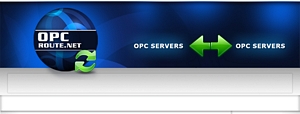OPC ROUTE.NET
OPC Route.Net allows you to transfer data from local and remote OPC Servers to other local and remote OPC Servers. You can
PRODUCT FEATURES
- Configure both local and remote OPC Systems Service configurations manually, with CSV Export and Import, or programmatically from your own application.
- Control and modify Tag, Data Logging, Alarm Logging, Alarm Notification, Recipe, Report, and Security configurations along with and Options from your own application!
- Unlimited remote clients.
- Implement Smart Client deployment with 100% managed components.
- Use Visual Studio 2012, 2010, 2008, and Expression Blend 4 to create your own applications.
- Extremely fast data update with very low CPU usage.
- Very cost effective solutions for both individual and corporate users.
- Perfect solution for OEMs to create their own SCADA / HMI software to package with their systems.
- Fast development time with no code required.
- Easy setup of trending, alarming, data logging, reports, recipe management, and security in central configuration.
- Use your own data from .NET applications.
OPC ROUTE.NET COMPONENT FEATURES
- Transfer data from any local or remote OPC Server to one or multiple local OPC Servers.
- Use Calculations as data source to create real-time equations and transfer results back to OPC Servers.
- Implements .NET Remoting to greatly simplify remote data transfer from system to system.
- Use multiple OPC Systems Windows Services to build a complete network of data transfer system and connect each Service to local OPC Servers, thus simplifying network administration and eliminating DCOM configuration.
- Runs as a Windows Service.
- Support on-line modification for all properties, so no interruption of data transfer is required during configuration.
